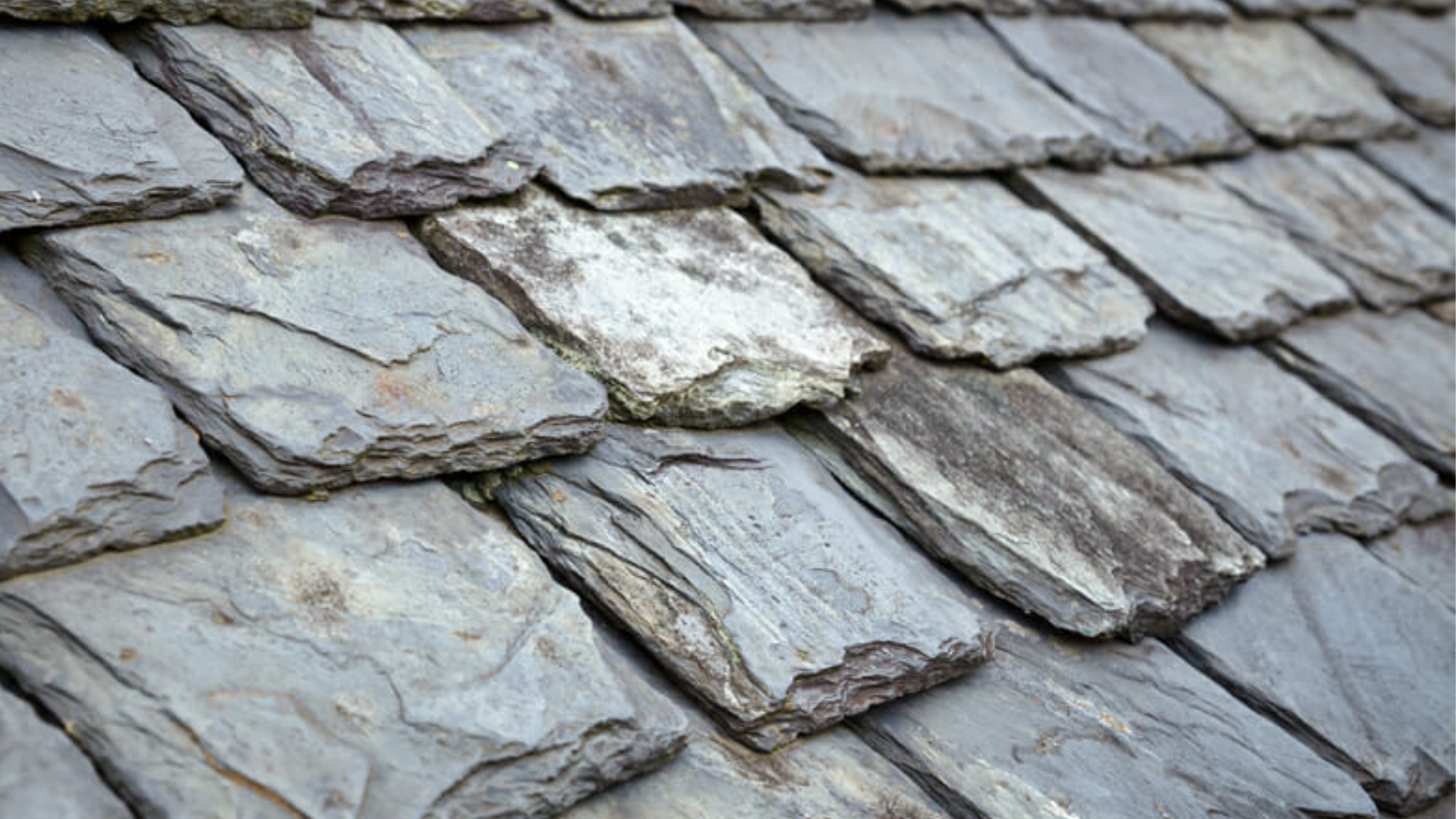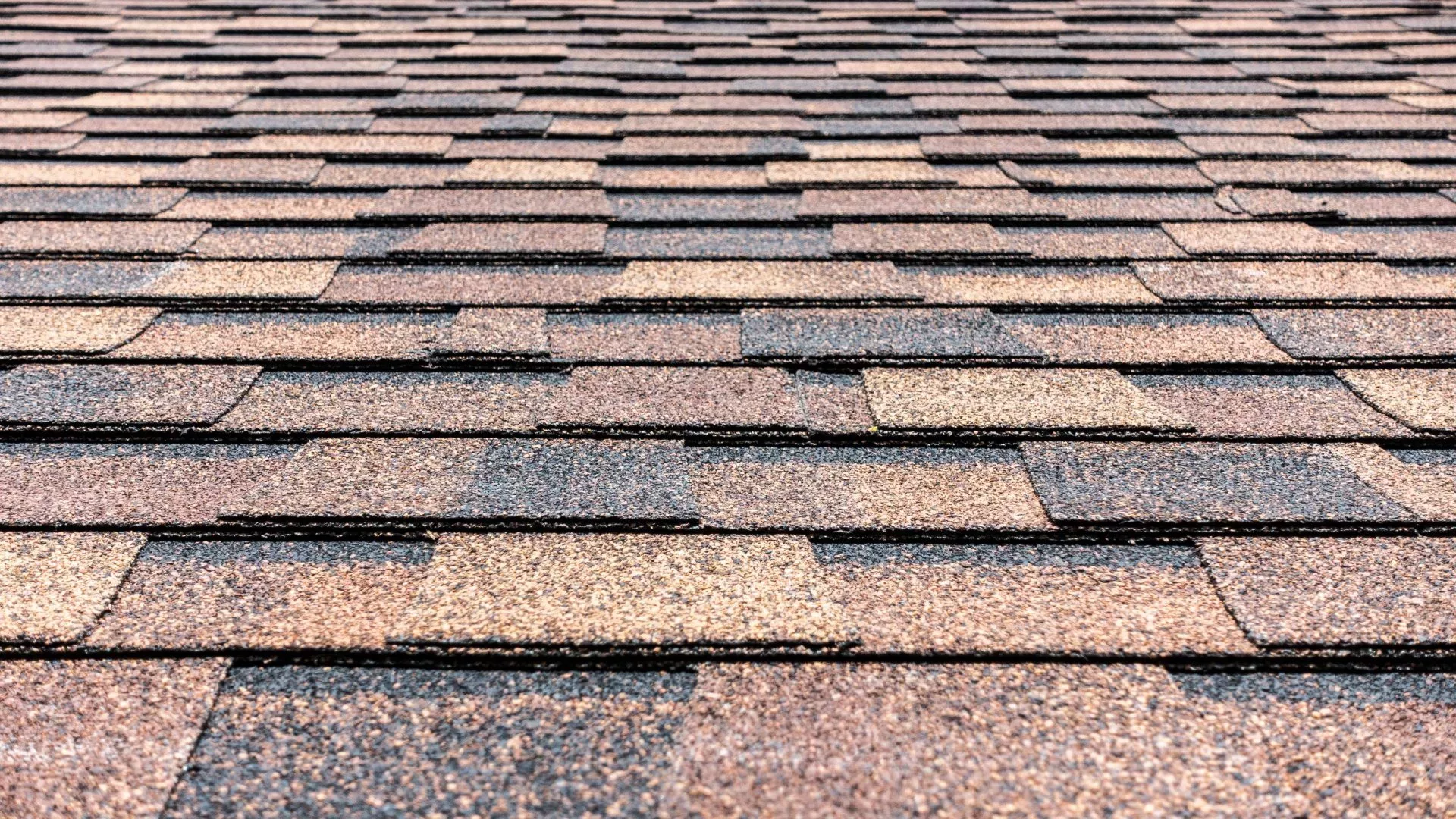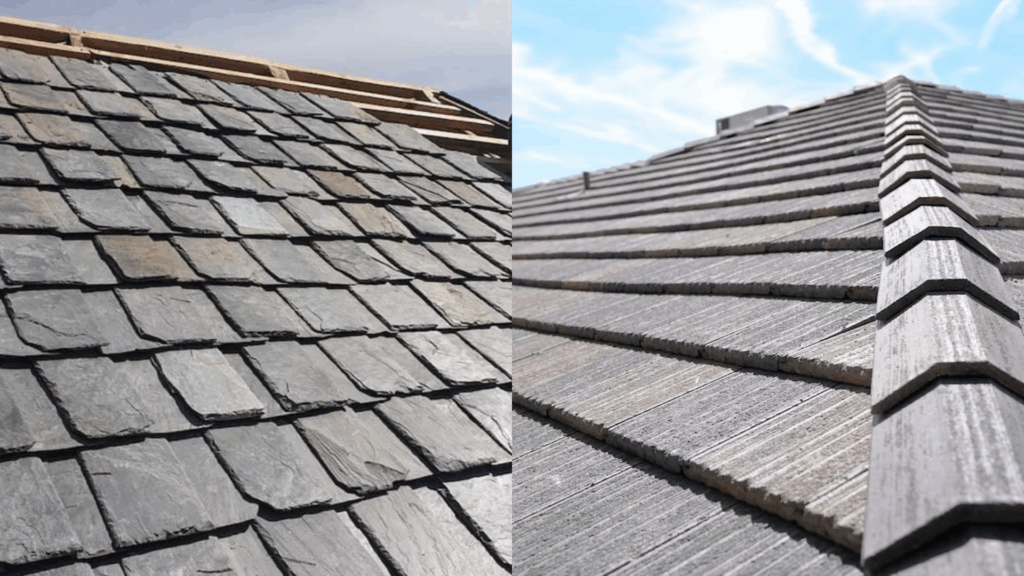When choosing a roofing material for your home, two popular options are slate and asphalt shingles.
Both have their own benefits, but the decision comes down to factors such as cost, durability, and appearance.
Slate is known for its exceptional longevity and natural beauty, while asphalt shingles are more affordable and easier to install.
I will break down the key differences between these materials, helping you understand their pros and cons.
By the end of this guide, you’ll have a clear idea of which roofing material best suits your needs, whether it’s for aesthetic appeal, long-term durability, or cost-effectiveness.
This comparison will help you make an informed choice for your home.
What Is Slate Roofing?

Slate is a natural stone known for its elegant appearance, durability, and long-lasting performance.
It enhances a home’s look and value with its timeless, sophisticated aesthetic.
Slate tiles are made by splitting large pieces of rock into thin, flat sheets, which are installed in overlapping layers, creating a strong, weather-resistant surface.
This makes slate ideal for areas with harsh climates.
Highly resistant to fire, water, and pests, slate provides reliable protection for decades and adds classic, lasting appeal to any property.
Pros and Cons of Slate Roofing
Slate roofing is known for its durability and aesthetic appeal, but like any material, it has both advantages and disadvantages.
| Pros | Cons |
|---|---|
| Longevity: Slate roofs can last over 100 years with proper maintenance. | High Initial Cost: Installation can be expensive due to material and labor costs. |
| Durability: Resistant to extreme weather conditions, including fire and pests. | Heavy Weight: Slate roofs may require additional structural support. |
| Aesthetic Appeal: Offers a timeless and elegant look that enhances curb appeal. | Complex Installation: Requires skilled professionals for proper installation. |
| Eco-Friendly: Made from natural materials and can be recycled at the end of their life. | Brittleness: Tiles can be fragile and may break if walked on improperly. |
What Are Asphalt Shingles?

Asphalt shingles are the most common roofing material for residential homes, offering an affordable and practical solution.
Made from a base material, typically fiberglass or organic mat, coated with asphalt and topped with mineral granules, they are lightweight, easy to handle, and simple to install.
There are two main types: three-tab shingles, which offer a flat, uniform look, and architectural shingles, which are thicker, more durable, and have a dimensional appearance, often mimicking wood or slate.
Architectural shingles provide enhanced protection against the elements.
Pros and Cons of Asphalt Shingles
Asphalt shingles are a popular roofing material known for their affordability and ease of installation, but they also have some downsides.
| Pros | Cons |
|---|---|
| Affordability: Lower initial cost compared to slate. | Shorter Lifespan: Typically lasts 20–30 years. |
| Ease of Installation: Can be installed quickly by most roofing contractors. | Susceptible to Damage: Can be damaged by high winds, hail, and UV exposure. |
| Variety: Available in a wide range of colors and styles. | Maintenance: Requires regular inspections and potential repairs. |
| Lightweight: Does not require additional structural support. | Environmental Impact: Made from petroleum-based products and may not be recyclable in all areas. |
Key Differences Between Slate Roof and Shingle Roof
Here, we compare the critical factors that highlight the key differences between slate and asphalt shingles, helping you decide which roofing material fits your needs.
1. Durability
Slate roofs are incredibly durable, with a lifespan ranging from 75 to 200 years when maintained properly.
They can withstand extreme weather conditions, such as heavy rain, high winds, and intense sunlight. Brandon Foote, the owner of an Alabama roofing company known as Advanced Roofing & Construction LLC, explains this durability well:
“A slate roof is not only resistant to high winds, but its substantial weight anchors it firmly, making it nearly impervious to wind uplift.”
Slate is also highly resistant to fire, pests, and water damage, which makes it a great long-term investment for homeowners seeking durability.
Asphalt shingles, while durable, typically last between 20 and 30 years.
They are more susceptible to damage from extreme weather like high winds, hail, and UV exposure, requiring more frequent repairs and replacements.
2. Cost
The initial cost of slate roofing is high due to the material and labor-intensive installation process.
However, its longevity and durability provide significant savings over time, as fewer repairs or replacements are required throughout its lifespan.
Asphalt shingles are more affordable initially, making them a popular choice for budget-conscious homeowners.
Installation costs are lower than those of slate, but frequent repairs or replacements may add up over time, making the long-term cost higher than that of slate.
| Cost Factor | Slate Roofing | Asphalt Shingles |
|---|---|---|
| Material Cost | $10–$20 per sq. ft. | $0.80–$1.50 per sq. ft. |
| Labor Cost | $10–$15 per sq. ft. | $2–$4 per sq. ft. |
| Total Installation | $20–$35 per sq. ft. | $3–$5 per sq. ft. |
| Maintenance | Low; occasional repairs needed | Moderate; regular inspections required |
3. Aesthetic Appeal
Slate roofing provides a timeless, elegant look with natural stone colors and textures that enhance the curb appeal of any home.
Its sophisticated, classic appearance is ideal for those looking to elevate the aesthetic of their home with high-end roofing.
Asphalt Shingles come in various styles and colors, offering homeowners flexibility in design.
While they can mimic other materials like wood or slate, they typically do not match the refined, natural elegance that slate provides.
4. Maintenance
Slate roofs require minimal maintenance due to their strength and durability.
Once installed, they can last for many decades with minimal repairs, making them a low-maintenance roofing choice that needs only periodic inspections to maintain their integrity.
Asphalt Shingles need more frequent inspections and maintenance, especially after harsh weather.
Broken or missing shingles require quick replacements to prevent further damage, leading to higher maintenance costs over time compared to slate roofs.
5. Weight
Slate is a heavy material that can add significant weight to a roof.
This weight may require additional structural support during installation, which increases both the complexity and cost of installation.
Asphalt Shingles are lightweight, making them easier to handle and install.
They don’t require extra structural support, which simplifies installation and makes it suitable for a wider variety of homes.
6. Environmental Impact
Slate is a natural, sustainable roofing material that is eco-friendly and recyclable. Its durability ensures that it doesn’t need to be replaced frequently, reducing waste over time.
Additionally, slate’s natural production process has a minimal environmental impact.
Asphalt Shingles are made from petroleum-based products, contributing to a higher environmental footprint. While some can be recycled, most end up in landfills.
Their production also results in more environmental degradation compared to slate, making them less eco-friendly overall.
7. Slate vs. Shingles: A Side-by-Side Comparison
This comparison highlights the key differences between slate and asphalt shingles to help you choose the best roofing material for your home.
| Feature | Slate Roofing | Asphalt Shingles |
|---|---|---|
| Lifespan | 75–200 years | 20–30 years |
| Durability | Highly durable; resistant to fire, water, and pests | Moderate; susceptible to wind and hail damage |
| Cost | $10–$25 per sq. ft. | $3–$5 per sq. ft. |
| Weight | Heavy; may require structural reinforcement | Lightweight; no additional support needed |
| Aesthetic Appeal | Natural, elegant look | A variety of styles and colors |
| Maintenance | Low; occasional repairs needed | Moderate; regular inspections required |
| Installation | Complex; requires skilled labor | Simple; can be installed by most contractors |
Which Roofing Material Is Right for You?
The decision between slate and asphalt shingles comes down to factors like budget, longevity, aesthetic preferences, and your home’s structure.
If you’re looking for a long-lasting, durable roofing material, slate is an excellent choice, offering up to 200 years of protection.
Its natural beauty and elegance are unmatched, making it ideal for those who appreciate timeless aesthetics.
However, slate requires a strong home structure due to its weight and comes with a higher initial cost.
On the other hand, asphalt shingles are a more cost-effective solution, offering a variety of styles and colors to fit different preferences.
They are easier and quicker to install, and if your home can’t support slate’s weight, asphalt shingles are a more suitable choice.
Asphalt shingles typically last 20-30 years, so while they’re more affordable upfront, they may require more frequent repairs and replacements in the long run.
Conclusion
Slate and asphalt shingles each have their own benefits and challenges. Slate offers durability and elegance with a long lifespan, but requires a higher initial investment and additional structural support.
Asphalt shingles are more affordable and easier to install, but have a shorter lifespan and may need more maintenance.
Consider your home’s needs, budget, and long-term goals when making a decision. It’s a good idea to consult a roofing expert for tailored advice.
If you’re upgrading your roof, reach out to a local roofing contractor to find the best options for your home.
Frequently Asked Questions
How do I know if slate is the right material for my home?
Slate is ideal for homes seeking durability, elegance, and long-lasting performance, particularly in areas with harsh weather conditions. Consulting with a roofing expert can help determine if your home’s structure can support the weight of slate.
Can asphalt shingles be recycled?
Yes, many asphalt shingles are recyclable. They can be used in road construction, and some companies offer asphalt shingle recycling programs to reduce landfill waste.
How often should I inspect my slate roof?
It’s recommended to inspect your slate roof at least once a year, especially after severe weather. Regular inspections can help catch any early signs of damage, such as cracked or loose tiles.

